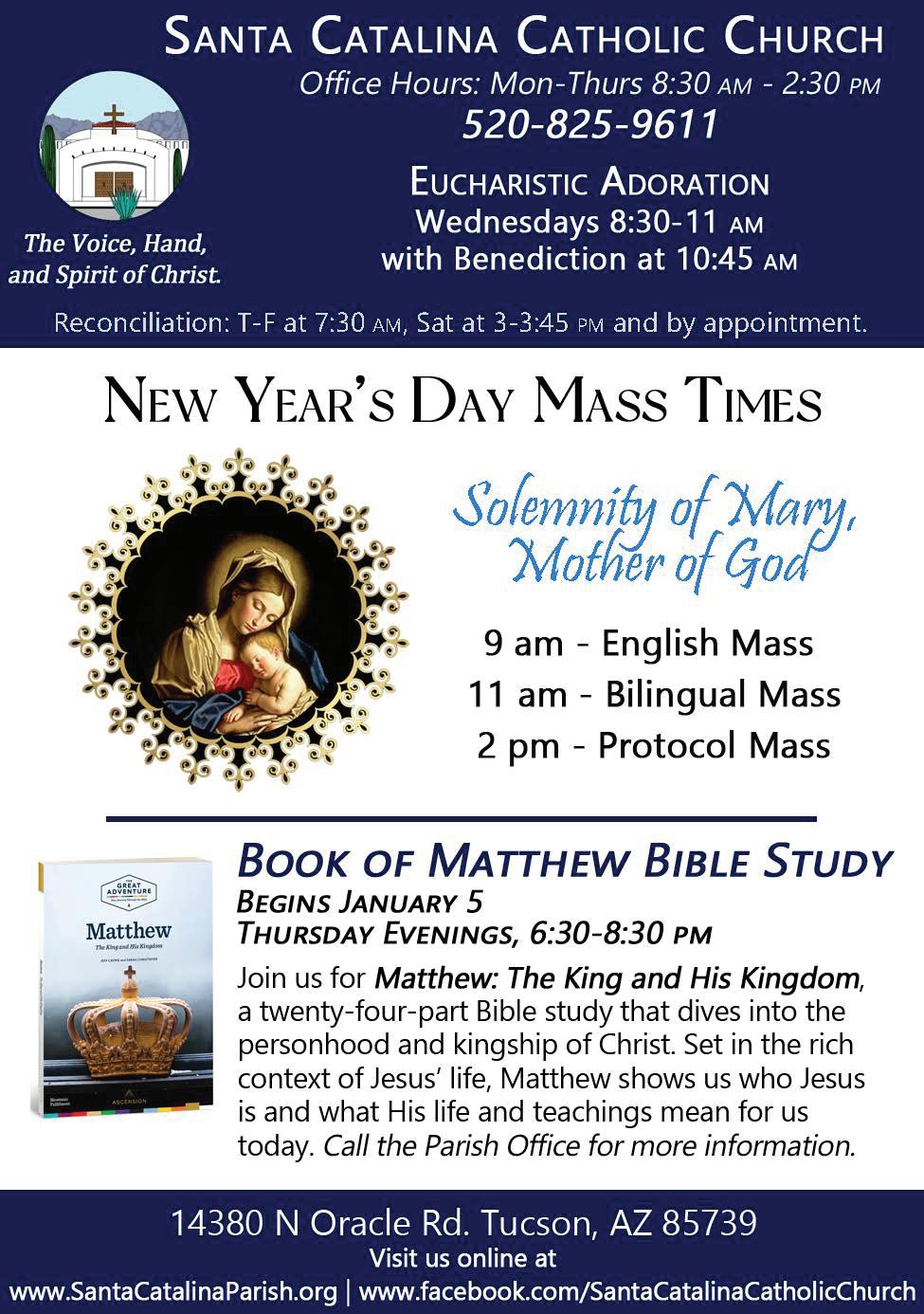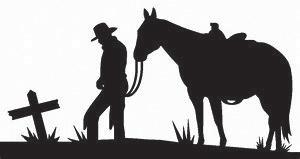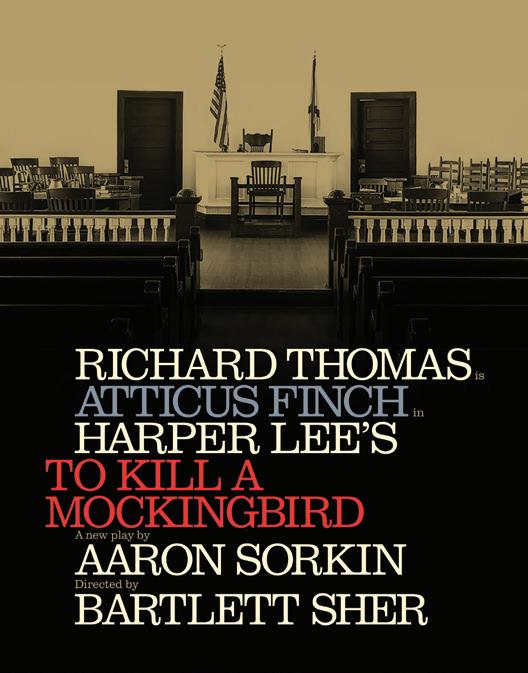The Voice of the Catalina Foothills







Special to Foothills News
The Jacobson House — a significant modernist property designed by celebrated 20th-century Arizona architect Judith Chafee — was listed on the National Register of Historic Places and, by unanimous vote of the Pima County Board of Supervisors, designated a Pima County Historic Landmark.

The County Historic Landmark designation will protect this important nationally and internationally recognized modernist home for future generations.
The Jacobson House is located off Campbell Avenue in the heart of Tucson’s Catalina Foothills. The single-family residential concrete and glass house was conceived of and designed starting in 1975 and constructed in 1977. The house is an important foundational example of the work of master architect Judith Chafee, FAIA (1932-98), and an outstand-
ing representation of Tucson’s Modern architectural movement.





Commissioned by clients Art and Joan Jacobson, the house featured a limited material palette of concrete, painted concrete block, aluminum frame windows and glass. These elements are masterfully combined to produce an environmentally responsive design expressed with distinctive interior and exterior zonal geometric design.
The exposed site-cast concrete structural beams supported on walls of painted reinforced concrete block create spans for glass windows walls, sliding glass doors and clerestory ribbon windows that allow diffused light to enter the space. Both the physical orientation and bioclimatic site design were a direct response to the desert environment, climate, views, natural setting, and the seasonal loca-
JACOBSON Page
 BY CHRISTINA FUOCO-KARASINSKI Tucson Local Media Staff
BY CHRISTINA FUOCO-KARASINSKI Tucson Local Media Staff
Tecovas, Levi’s and Psycho Bunny and True Food Kitchen will soon find a home in La Encantada.

Next year, True Food Kitchen will begin serving its seasonally inspired dishes and natural beverages on the second level.
The restaurant was founded in Phoenix in 2008 by Dr. Andrew Weil, a doctor of integrated medicine and founder/director of the UA’s Andrew Weil Center for Integra-
tive Medicine.
The menu emphasizes fresh and simple ingredients in entrées that highlight the natural health benefits and flavors of each ingredient.
Diners can look forward to nutrient-rich staples, responsibly sourced proteins and little-known superfoods in creative and flavorful dishes, as well as thoughtfully crafted cocktails.
“We’re looking forward to adding True Food Kitchen and its cutting-edge wellness
menu to our dining options at La Encantada,” said Toby Horvath, president of Town West Realty.
“Our guests — from local Tucsonans to winter visitors and tourists, University of Arizona families and alum — love having healthy dining options that support their active, outdoor lifestyles, and True Food Kitchen meets that demand, especially given the variety of gluten-friendly, vegetarian

Wednesday, Dec. 28
Is “Die Hard” a Christmas movie? The Loft Cinema says, “Yes.” Deck the halls with Bruce Willis at the “Die Hard” movie party at 7 p.m. Wednesday, Dec. 28. General admission is $15; Loft members are $12. For more information, visit loftcinema.org. The Loft Cinema, 3233 E. Speedway Boulevard.
Wednesday, Dec. 28, to Friday, Dec. 30
“Ready, set, glow!” The Reid Park Zoo and Tucson Electric Power present Zoolights: Holiday Magic from 6 to 9 p.m. through Friday, Dec. 30. Take a walk under enchanting lights and a “confection-merry Candyland,” head to the
Wednesday, Dec. 28, to Sunday, Jan. 8
The city of Tucson, Rio Nuevo and Pima Pain Center present Tucson Holiday Ice now through Sunday, Jan. 8. Skate rentals available; socks are required, and gloves are highly recommended. Tucson Holiday Ice tickets are available online for various sessions. Visit tucsonaz.gov to reserve a spot. Tucson Holiday Ice, 260 S. Church Avenue. (In front of the Tucson Convention Center ticket office.)
Wednesday, Dec. 28, to Sunday, Jan. 15 Tucson Botanical Gardens continues to present the highly anticipated and luminous holiday installation, “Lights Up! A Festival of Illumination,” through Sunday, Jan. 15. With more
Wednesday, Dec. 28, to Saturday, May 20
It’s been a long journey for Willem de Koonig’s “Woman-Ochre,” since its shocking theft in 1985 from the UA Museum of Art. Over three decades later, it has returned home and is on display through May. Tickets for “Restored: The Return of Woman-Ochre” are $8 general admission; $6 seniors 65 and older and groups of 10 or more; and free for students with ID, museum members, UA faculty, staff, military personnel, AAM members, visitors with a SNAP card or Tribal ID, and children. For more information about other ongoing exhibits, visit artmuseum.arizona.edu. The UA Museum of Art, 1031 N. Olive Road.
Broadway in Tucson presents, “Annie” at Centennial Hall on the UA campus Tuesday, Jan. 3, to Sunday, Jan. 8. For decades, the Little Orphan Annie has reminded visitors that sunshine is always around the corner. For more information about tickets, showtimes or Broadway in Tucson, visit broadwayintucson.com. Centennial Hall,
Discover Baja AZ wines at the Winter Wine Tasting Series on Wednesday, Dec. 28, at Hotel Congress’ jazz club, the Century Room. Cost is $30. Doors open at 6 p.m., the expert-led and curated flight tasting begins at 6:30 p.m., and live music follows at 7 p.m. For more information about the Century Room and the Winter Wine Tasting Series, check out dice.fm. The Century Room, 311 E. Con-
The city of Tucson and Reffkin Tennis Center presents one of the country’s biggest tennis events, the 2022 Level 1 USTA National Winter Championships, Wednesday, Dec. 28, to Tuesday, Jan. 3.
BY KATYA MENDOZA Tucson Local Media StaffFor more information, visit playtennis. usta.com. Reffkin Tennis Center, 50 S. Alvernon Way.
Thursday, Dec. 29, to Friday, Dec. 30
The Yume Japanese Gardens of Tucson present the Hokkaido: Silent Snow Exhibit through Friday, Dec. 30. Journey through the far North of Japan through Elizabeth Sanjuan’s eyes, and witness the majestic stillness of the magical land. Tickets $15; $10 members; and $6 for children ages 3 to 15. For more information, visit yumegardens.org. Yume Japanese Gardens of Tucson, 2130 N. Alvernon Way.
Join in on the fun at the 2022 Barstool Sports Arizona Bowl Tailgate Festival at 10 a.m. on the UA Campus East Mall before Wyoming and Ohio kickoff. Enjoy food, beverages, cornhole, car show and more. Ticket prices for the game vary. For more information, visit thearizonabowl.com. Arizona Stadium, 1 N. National Championship Drive.
The town of Marana presents the #RUNMARANA Egg Nog Jog and Kid’s Free Fun Run at 8 a.m. Saturday, Dec. 31. Race day check-in starts at 7 a.m. Choose from 5K or 10K and run along the scenic Santa Cruz river path toward the celebratory eggnog that will be waiting at the finish line. Registration is $30 before race day, $40 day of. For more information, visit runsignup.com. Crossroads at Silverbell District Park, 7548 N. Silverbell Road.
The town of Oro Valley presents the ninth annual Hot Cocoa 5K Run/Walk at 11:23 a.m. Sunday, Jan. 1. The race will take place along the multiuse path, beginning at Steam Pump Ranch, including water, snacks and hot cocoa. Registration is $30 before race day, $35 on race day. For more information, visit orovalleyaz.gov. Steam Pump Ranch, 10901 N. Oracle Road.

Steve T. Strickbine, Publisher Michael Hiatt, Vice President Claudine Sowards, Accounting claudine@tucsonlocalmedia.com
EDITORIAL
Christina Fuoco-Karasinski, Executive Editor christina@tucsonlocalmedia.com
Katya Mendoza, Staff Reporter kmendoza@timespublications.com
Hope Peters, Staff Reporter hpeters@timespublications.com
Karen Schaffner, Staff Reporter kschaffner@timespublications.com
PRODUCTION
Shannon Mead, Design/Production Manager smead@timespublications.com

Ruth Carlton, Graphic Designer rcarlton@timespublications.com
CIRCULATION
Aaron Kolodny, Circulation Director aaron@phoenix.org
Brian Juhl, Distribution Manager brian@timeslocalmedia.com
ADVERTISING
TLMSales@TucsonLocalMedia.com








Gary Tackett, Associate Publisher gtackett@tucsonlocalmedia.com
Kristin Chester, Account Executive kristin@tucsonlocalmedia.com Candace Murray, Account Executive candace@tucsonlocalmedia.com
Tyler Vondrak, Account Executive tyler@tucsonlocalmedia.com
Zac Reynolds, Director of National Advertising Zac@TimesPublications.com

Foothills News expresses its opinion in the editorial. Opinions expressed in guest commentaries, perspectives, cartoons or letters to the editor are those of the author. The content and claims of any advertisement are the sole responsibility of the advertiser. Tucson Local Media assumes no responsibility for the claims or content of any advertisement. Publisher has the right to edit for size or refuse any advertisement at his or her discretion.
7225 N. Mona Lisa Road, Ste. 125 Tucson, Arizona 85741 • 520-797-4384
Copyright: The entire contents of Foothills News are Copyright Times Media Group No portion may be reproduced in whole or part by any means without the express written permission of the Publisher, Tucson Local Media, 7225 N. Mona Lisa Rd., Ste. 125, Tucson, AZ 85741.
















Foothills News is distributed by AZ Integrated Media a circulation company owned & operated by Times Media Group The public is limited to one copy per reader. For circulation services, please contact Aaron Kolodny at aaron@phoenix.org.
To start or stop delivery of the paper, please visit: https://timespublications.com/tucson/ or call 480-898-7901


To receive your free online edition subscription, please visit: https://www.tucsonlocalmedia.com/ newsletter/signup/


It is well known that walking can be our best exercise routine. It doesn’t cost anything except a decent pair of shoes and some time. You don’t need to join a gym, and there’s no special equipment required. And walking is something we do every day, all the time, anyway.
Getting from the bedroom to the kitchen or from a parking lot to a store involves something so automatic that we often don’t think about it unless on a special hike or over different terrain. (Think snow and sleet!)
Our brains are rarely challenged, but still our bodies get a pretty good workout. We feel it’s just not complicated, and we reap great health benefits from a walking exercise regimen. Or maybe it is a bit more complicated than we realize. Staying upright requires coordination between three systems: our visual (what we see), our vestibular (movement) and our proprioceptive (the awareness of where we are in the environment). Most of us
walk without the appreciation for, or full understanding of, how we are doing it.
But could we make it a better workout for both body and brain? Walking backward has been shown to multiply the health benefits of walking. When we walk backward, we actually have to think about balance and orientation as to where we are in the environment (whether indoors or out).
The journal Clinical Rehabilitation published a 2019 study looking at the effectiveness of backward walking in the treatment of people with walking impairments related to neurological and musculoskeletal disorders. It concluded that backward walking along with regular physical therapy was clinically effective in improving the stability and balance in people with knee osteoarthritis.
Walking backward forces us to take shorter and more frequents steps. This leads to improved muscular endurance in the muscles in our legs and lessens the burden on our joints. And adding an up or downhill to the walk can relieve the heel pain of plantar fasciitis.
We have a different posture when walking backward, and we use more of those
muscles that support our lumbar spine. This could be great exercise for people suffering from chronic lower back pain. The Journal of Chiropractic Medicine in 2019 published research that showed an increased activation of paraspinal muscles and aerobic movement with backward walking. The international Journal of Environmental Research and Public Health published a study showing that walking backward on a treadmill improved the walking ability of people with chronic stroke disorder.
Backward walking has benefits aside from improving clinical symptoms. Maintaining a healthy weight is important for overall good health, and walking backward consumes 40% more energy than forward walking. In 2005, there was a research study that showed a reduction in body fat in young women after a backward walking and running training program (International Journal of Sports Medicine, April 2005). Running backward heightens those benefits even more. There are fewer running injuries and greater economy of movement due to the increased strength of the muscles that straighten the knee. This also plac-
es a heavier demand on the heart and lungs for more aerobic benefit.
Walking backward sounds simple, but it is not that easy. You must have a heightened awareness of your surroundings to avoid tripping or crashing into some obstacle behind you. This is a learned skill that comes with practice. Starting indoors is a good idea where you know most of the landmarks.
The technique is look straight ahead holding your head and chest upright. Reach back with your big toe for each step, landing on your heel. Using a treadmill allows for speed control and adjusting the inclines but holding the handrails is always a good idea. Loading a sledge and dragging it backward is also good exercise with a moderately low risk of injury. Legs become stronger, and even with weights a little as 10% of body weight can lead to faster sprint times for those who are enjoy running.
Walking is excellent exercise regardless of what direction you are headed!
Mia Smitt is a longtime nurse practitioner. She writes a regular column for Tucson Local Media.
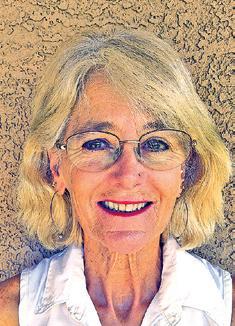
Colorectal cancer, cancer of the large intestine and lower part of the digestive system, is expected to cause more than 52,000 deaths in America in 2022. It is increasingly more common in younger adults.
Early detection, however, dramatically increases the survival rate in people of all ages. If colorectal cancer is found before it has spread to other areas of the body, the five-year survival rate is about 90%. If not caught before this point, the survival rate is much lower — about 14 %.
“The best treatment is prevention,” said Dr. Shane Svoboda, a colorectal and general surgeon at Northwest Medical Center. “My gold standard for screening is a colonoscopy — which allows us to see inside the colon and rectum — starting at the age of 45. Patients with a fam-
DR. SHANE SVOBODA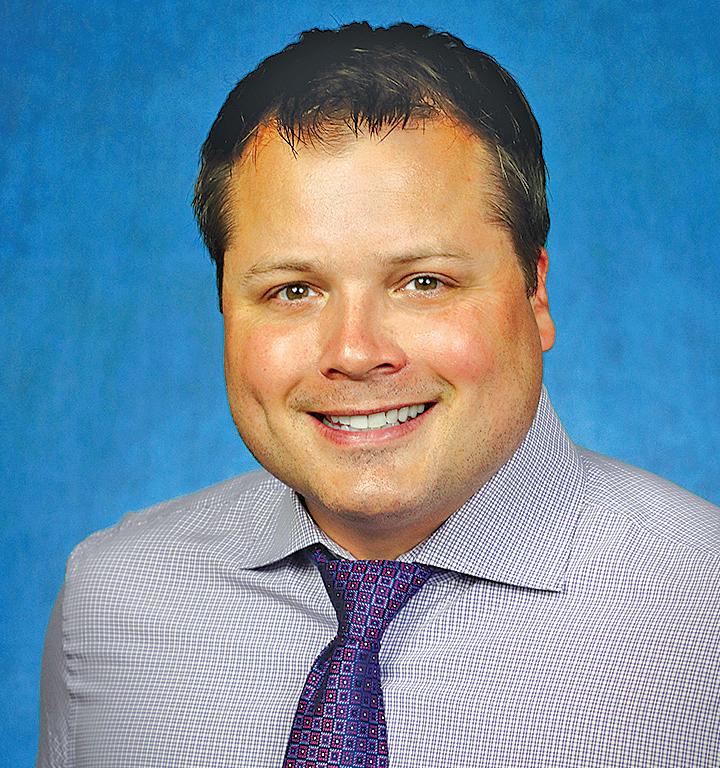
ily history of colon cancer should start screening colonoscopies 10 years before the earliest age of diagnosis.”
The American Cancer Society also recommends a routine colonoscopy screen-
ing beginning at age 45. A gastroenterologist performs this simple procedure by inserting a thin, flexible tube into the lower digestive tract while the patient is sedated or asleep. The tube has a light and a tiny camera that transmits images of the patient’s intestinal lining to a computer screen at the bedside. Alternatively, some patients may benefit from an at-home colon cancer screening kit if recommended by a physician.
If polyps (growths) are found during the exam, they are quickly and painlessly removed and later tested in a laboratory for signs of cancer. While polyps are common, and usually harmless, in adults, most colorectal cancer begins as a polyp, so removing polyps early is important.
The doctor may also take samples from any abnormal-looking tissues — a biopsy — so it can be examined for signs
of disease and treated, if necessary.
Risk levels for colon cancer varies according to age, sex and ethnic background, as well as your overall health and lifestyle. Factors that affect risk level include:
• Advancing age (over age 50).
• Being male.
• Being African American.
• A family or personal history of polyps or colorectal cancer.
• A high-fat diet.
• Having diabetes, Crohn’s disease, ulcerative colitis or other digestive disease.
A colonoscopy screening is usually a covered “wellness” test — and most plans cover a colonoscopy completely as a follow-up test or diagnostic tool.
To learn more about colonoscopy with a Northwest Healthcare provider, visit nwalliedphysicians.com/gastro.

cannot survive, and thus, slowly die. This leads to those painful and frustrating consequences we were talking about earlier, like weakness, numbness, tingling, balance issues, and perhaps even a burning sensation.
1. Finding the underlying cause
2. Determining the extent of the nerve damage (above 95% nerve loss is rarely treatable)
3. The amount of treatment required for the patient’s unique condition

The number of treatments required varies from patient to patient, and can only be determined following an in-depth neurological and vascular examination. As long as you have less than 95% nerve damage, there is hope!
they offer purely symptomatic relief, as to targeting and treating the root of the Worse, these drugs often trigger an onset of uncomfortable, and harmful side

way to effectively chronic pain and/or peripheral neuropathy is by targeting the source, which is the result of nerve damage owing to inadequate blood flow to the nerves in the hands and feet. This often causes weakness, numbness, tingling, pain, and balance problems. A lack of nutrients causes the nerves to degenerate – an insidious and often painful process.


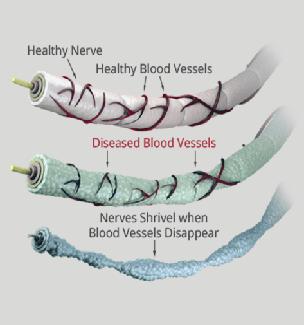
The drugs your doctor might prescribe will temporarily conceal the problems, putting a “BandAid” over a situation that will only continue to deteriorate without further action.
Thankfully, Oro Valley is the birthplace of a brandnew facility that sheds new light on this pressing problem of peripheral neuropathy and chronic pain. The company is trailblazing the medical industry by replacing outdated drugs and symptomatic reprieves with an advanced machine that targets the root of the problem at hand.

Arrowhead Physical Medicine in Oro Valley, AZ uses a state-of-the-art electric cell signaling systems worth $100,000.00. Th is ground-breaking treatment is engineered to achieve the following, accompanied by advanced diagnostics and a basic skin biopsy to accurately analyze results:

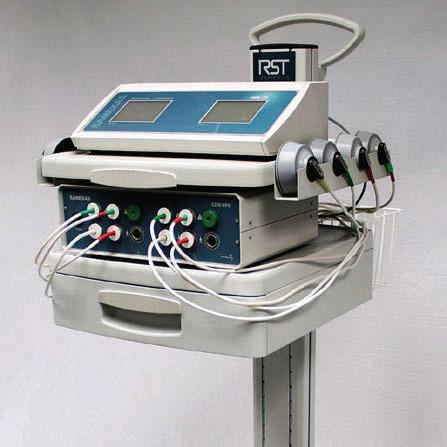
1. Increases blood flow

2. Stimulates and strengthens small fiber nerves

3. Improves brain-based pain
The treatment works by delivering energy to the affected area(s) at varying wavelengths, from low- to middle-frequency signals, while also using Amplitude Modulated (AM) and Frequency Modulated (FM) signaling
It’s completely painless!
THE GREAT NEWS IS THAT THIS TREATMENT IS COVERED BY MEDICARE, MEDICAID, AND MOST INSURANCES!!
Arrowhead Physical Medicine begins by analyzing the extent of the nerve damage – a complimentary service for comprises a detailed your friends and family.sensoryEach exam evaluation, extensive peripheral vascular testing, and comprehensive analysis of neuropathy findings.
Arrowhead Physical Medicine begins by analyzing the extent of the nerve damage –a complimentary service for comprises a detailed your friends and family. Each sensory exam evaluation, extensive peripheral vascular testing, and comprehensive analysis of neuropathy findings.
Arrowhead Physical Medicine will be offering this free chronic pain and neuropathy severity evaluation will be available until December 31st, 2022. Call (520) 934-0130 to make an appointment
Arrowhead Physical Medicine will be offering this free chronic pain and neuropathy severity evaluation will be available until December 31st, 2022. Call (520) 934-0130 to make an appointment
Due to our very busy office schedule, we are limiting this offer to the first 10 c allers Y OU DO NOT HAVE TO SUFFER ANOTHER MINUTE, CALL (520) 934-0130 NOW!!
We are extremely busy, so we are unavailable, please leave a voice message and we will get back to you as soon as possible.
As displayed in figure 1 above, the nerves are surrounded by diseased, withered blood vessels. A lack of sufficient nutrients means the nerves
Effective neuropathy treatment relies on the following three factors:
Depending on your coverage, your peripheral neuropathy treatment could cost almost nothing – or be absolutely free.
Arrowhead Physical Medicine 10425 N Oracle Rd., Suite 125 Oro Valley, AZ, 85737

tion of the sun. The house is designed with an explicit indoor-outdoor relationship and spatial arrangement that creates a floor plan with a series of courtyards that serve as outdoor rooms.
Although The Jacobson House is considered an exceptional example of the tenets of Chafee’s work, because it is under 50 years old, the National Register nomination had to demonstrate the outstanding importance of the property and show it had achieved significance within the past 50 years. From its construction onward, the Jacobson House has been recognized as a masterpiece.
The project was awarded the American Concrete Institute Arizona Chapter Award for Outstanding Use of Concrete in 1978 and the property was featured in numerous publications and journals including Architectural Record (May 1979), A House and Garden Guide Building magazine (spring 1979), the Japanese journal of urban housing Toshi-Jutaku (November 1979), Artspace magazine (spring 1982), Arizona Daily Star home feature (Dec. 26, 1982), and Tucson Citizen focus feature (Oct. 8, 1985).
In 2016, The Jacobson House was featured in the Arizona Public Media PBS-produced documentary The Architect: Judith Chafee. More broadly, Chafee is also noted in William J.R.Curtis’ Modern Architecture Since 1900 (1987).
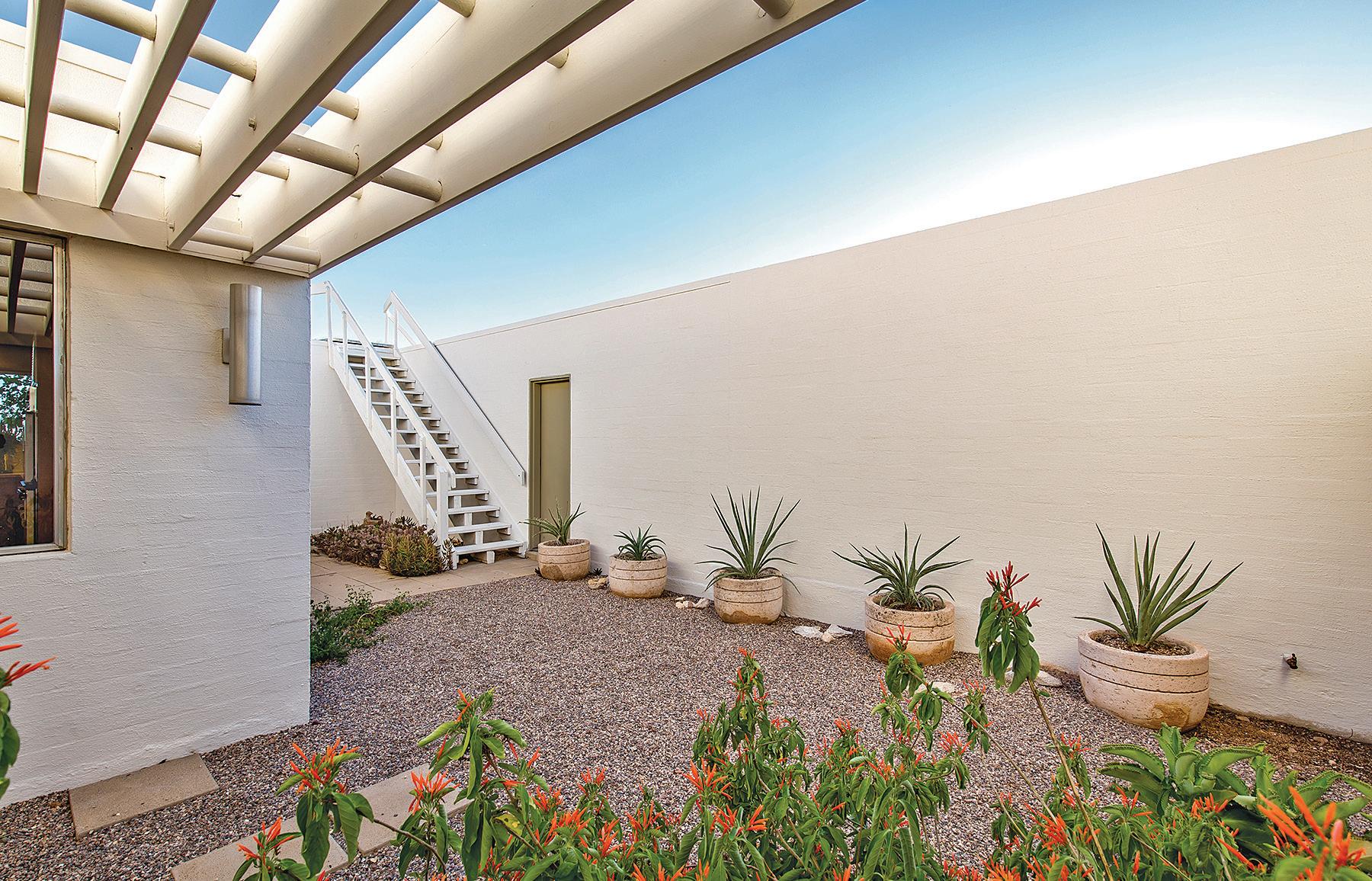

The 2019 book “Powerhouse: The Life and Work of Judith Chafee” by Christopher Domin and Kathryn McGuire with
an introduction by William J. R. Curtis was published by Princeton Architectural Press and funded in part by the Graham Foundation.
It provided contextual scholarship examining Chafee’s life and work and extensively features The Jacobson House and its importance within Chafee’s architectural development.
In 2021, the house was sold. Demion Clinco, an owner of the property and CEO of the Tucson Historic Preservation Foundation, oversaw the 12-month restoration and authored the National Register Nomination.
“The designations of the Jacobson House by the National Park Service and the Pima County Board of Supervisors recognize the importance of Judith Chafee’s archival work to our region and our country,” Clinco said.
“These designations will protect this extraordinary cultural resource for future generations and celebrate our
unique 20th-century design heritage. I hope the careful restoration of this stunning property will be a model for future projects in our community.”
Judy Clinco, a partner on the project, said, “Protecting, preserving and recognizing the design work of a major America women architect, at a time when women’s rights are under attack, underscores both historic and contemporary issues of equality, equal pay, and the value women have always brought to the evolution of our shared culture.”
Chafee was born in Chicago in 1932. Her mother oversaw the modern furnishings department of a prominent Chicago department store and her stepfather was an internal medicine and pathology specialist. The family later relocated to Tucson.
Chafee attended Francis W. Parker School, before matriculating into Bennington College graduating with a major in visual arts. In 1956 she enrolled in Yale University’s Graduate School of Arts and Architecture and was the only woman to graduate from her class. After graduating in 1960 with a master’s degree she worked for Paul Rudolph on the development of projects including the Yale University Art and Architecture Building and Married Student Housing and later job captain for residential projects in Baltimore.
In 1962 she accepted a position with Walter Gropius’ The Architects Collaborative (TAC) and worked on education projects for Brandeis and Radcliffe.
After a year in Cambridge, she accepted a position with Eero Saarinen and Associates in Connecticut she worked on projects including Cummings Diesel in Darlington England and the international terminal for the TWA Flight Center at JFK. She then worked for five
years at the Edward Larrabee Barnes Office in New Haven and ran a small private practice.
In 1969, Chafee returned to Tucson and opened an architectural practice. From her home and office in a Sonoran adobe row house in the El Presidio Neighborhood, she continued work on the Merrill Residence and the Funking House (1972) in the Northeast. The awards and recognition for the Merrill project brought her noted recognition.
Throughout this period, she explored the Southwest and Northern Mexico.
During her career in Tucson, Chafee produced some of the most significant architecture in Pima County and Arizona. As noted by William J. R. Curtis in the introductory essay of “Powerhouse: The Life and Work of Judith Chafee,” “When one looks back over Judith Chafee’s entire oeuvre, one is struck by the uniqueness of each work but also by her consistent ways of thinking, imagining and designing. She did not possess an obvious signature style, but she did have deeply embedded patterns of visual and spatial organization that informed her overall production even as she invented contrasting designs. The recurrent mental structures and spatial types were rethought in each case so as to solve the unique problems of each site, program, climate and landscape. … To realize her house designs, Judith Chafee needed clients who were willing to take some aesthetic risks, as her work departed dramatically from the Pueblo Revival style dwellings that were often built in and around Tucson.”
The Pima County Historic Landmark designation promotes the educational, cultural, economic and general welfare of the community and ensures the harmonious growth and development of the county by encouraging the preservation and rehabilitation of significant buildings, structures, sites, objects and archaeological resources.
These designations are intended to ensure the preservation of significant historic and archaeological resources and to keep them in active use or management in their historic appearance, settings and locations. The designation is a zoning overlay that proactively places restrictions on the property that protect it and require approval from the board of supervisors for future demolition.
The UA’s Office of Sustainability Compost Cats invites the public to help combat food waste this holiday season and join its Bucket Program.
Each year, millions of tons of waste enter Tucson’s landfills. About 40% of that waste is compostable organic materials, including produce scraps, plant trimmings, coffee grounds and other common household items.
Composting is the natural process of recycling organic matter, such as plant trimmings and food scraps, into a valuable fertilizer that can enrich soil and plants.
Since its founding in 2011, the Compost Cats have diverted more than 20 million pounds of food waste from local landfills. It’s the only organization in Southern Arizona that accepts large volumes of food scraps, manure, brush and other landscaping materials. In 2014, the organization partnered with the city of Tucson Environmental Services to collect more food scraps from across town, working with over 100 local businesses, diverting over 1 million pounds of waste.
Four years later, Compost Cats transitioned from the College of Agriculture and Life Sciences Cooperative Extension to the Office of Sustainability. Since then, it has been working with the university to strengthen its public education, research and outreach efforts.
“We provide all of this community engagement to be more meaningful and impactful, changing the community behavior to divert food waste,” said Dr. Ilse Rojas-Hamilton, Compost Cats’ program manager.
Rojas-Hamilton, who joined the Office of Sustainability in July 2019, brought 12 years of experience in interdisciplinary research, environmental consulting, outreach and education programs development and mentorship.
In January 2021, she helped open a compost operation with the city of Tucson Environmental Services at the Los Reales Sustainability Campus, formerly known as the Los Reales Landfill. The regional facility is the only active landfill managed and owned by the city.
Rojas-Hamilton said Compost Cats works to educate the campus and the community at its demonstration sites and workshops. In the past year, it has reached out to more than 6,000 people, including K-12 students, through projects like the UA Community Garden.
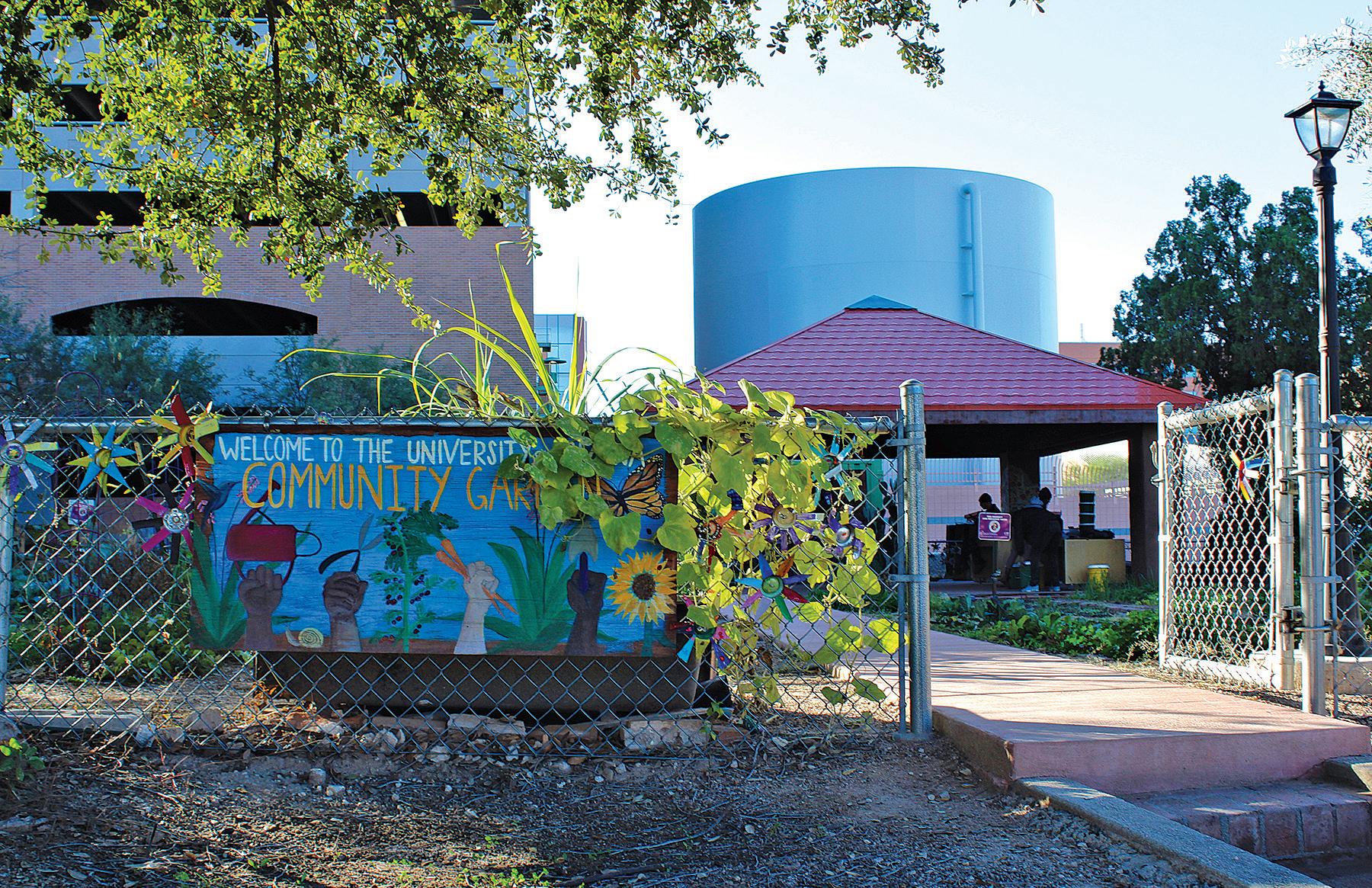
“We deliver experiential learning and hands-on education,” Rojas-Hamilton said, noting that school children who visit the garden love to see the worms.
“A lot of my work is with education and making demonstration sites to teach people about what we do and things we can do specifically in Tucson to live more sustainably as a community,” said Isabelle Young, a student Compost Cats specialist and a senior studying art and visual culture education with teaching emphasis.
“I really love being involved with kids and master gardeners programs. It feels like we’re really making a difference,” Young said.
She started working with Compost Cats in 2021 and became familiar with the program’s UA Community Garden during her work with Students for Sustainability.
A popular service, Compost Cats’ Bucket Program is a paid residential compost collection program that provides participants with 2- or 5-gallon buckets and a list of compostable items. After participants fill their buckets or containers, they can drop off their food scraps to the Commu-
nity Garden at 1400 E. Mabel Street. There, student compost specialists weigh the food waste and check for contamination before turning it into compost.
Visitors and campus affiliates take household items like bread, flower arrangements and watermelon to the Community Garden. Jackson said that the Bucket Program has reached close to 400 participants.
“We have services Monday through Saturday,” Rojas-Hamilton said. “We have drop-off (sites) at three different locations across town to make them more accessible.” The program is free for students, but all users must pay a one-time $20 to $30 onboarding fee.
“If compost is done right, it doesn’t stink,” Young said. It needs a good ratio of carbon and nitrogen sources, Rojas-Hamilton added.
Compost takes three to five months to complete and be usable, Young explained, adding it requires the same commitment as having a pet.
Brandon Green is a junior studying microbiology who has served as the Cats’ compost systems team lead for four months. He regularly visits the garden to check on and activate the compost stages.
“You really become a part of the sustainability community in town,” Green said. “You get to see big projects people are working on and it’s really inspiring to be at the center of it because we are
making a difference.”
Compost Cats coordinator Kenzie Jackson added, “When we onboard participants, we give them a rundown of everything that is and isn’t compostable.”
Jackson earned a bachelor’s degree in natural resources with an emphasis on conservation biology in May 2021 from the UA. Jackson worked for Cooper Center for Environmental Learning’s outreach team, providing hands-on, research-based programs in environmental education.
Compost Cats’ Food Cycle team lead Jose Angel Garcia said 15 Tucson businesses compost with it.
The commercial program provides companies with designated containers that city workers take to the Los Reales Sustainability Campus. Compost Cats donates compost to Tucson Community Gardens, which has about 22 refugee and community gardens across the city, to Bucket Program members, local gardeners, schools and anybody else who might need compost, he said.
Garcia is a graduating senior studying interdisciplinary studies with an emphasis in economy and industry, with a minor in Spanish. He’ll work for the city after graduation.
Some of the businesses that participate in the food recycle program include local coffee shops such as Raging Sage Coffee Roasters; Starbucks at the UA Bookstore and other restaurants on campus; Hotel Congress and the 3000 Club - Home of Market on the Move, which rescues produce from purveyors in Nogales; and more recently the federal prison.
Composting helps prevent the generation of harmful greenhouse gasses such as methane and carbon dioxide, which trap heat in the atmosphere and contribute to the global climate crisis. According to the Yale School of the Environment, “Many scientists say that regenerative agricultural practices can turn back the carbon block, reducing atmospheric CO2 while also boosting soil productivity and increasing resilience to floods and drought.”
from

1 and vegan dishes they have available. I think True Food Kitchen is going to quickly become a Tucson favorite.”
The Levi’s Store recently opened on the second level, selling its classic American clothing.

Tecovas is an Austin-based retailer of cowboy boots and Western-style apparel, while Psycho Bunny will sell its “reimagined classic menswear,” including its trademark 4,000-stitch bunny-embroidered polos.
“A lot of households that join us reduce about 20% of their household waste,” Garcia said. “It’s also very accessible for people that might not have the space at home.”
In addition to the diversion of food waste interception and diversion, the organization’s scope of work includes initiatives to combat food insecurity in Southern Arizona. According to the Community Food Bank of Southern Arizona, as of 2019, (prior to the COVID-19 pandemic), almost 19% of Tucson’s pop -
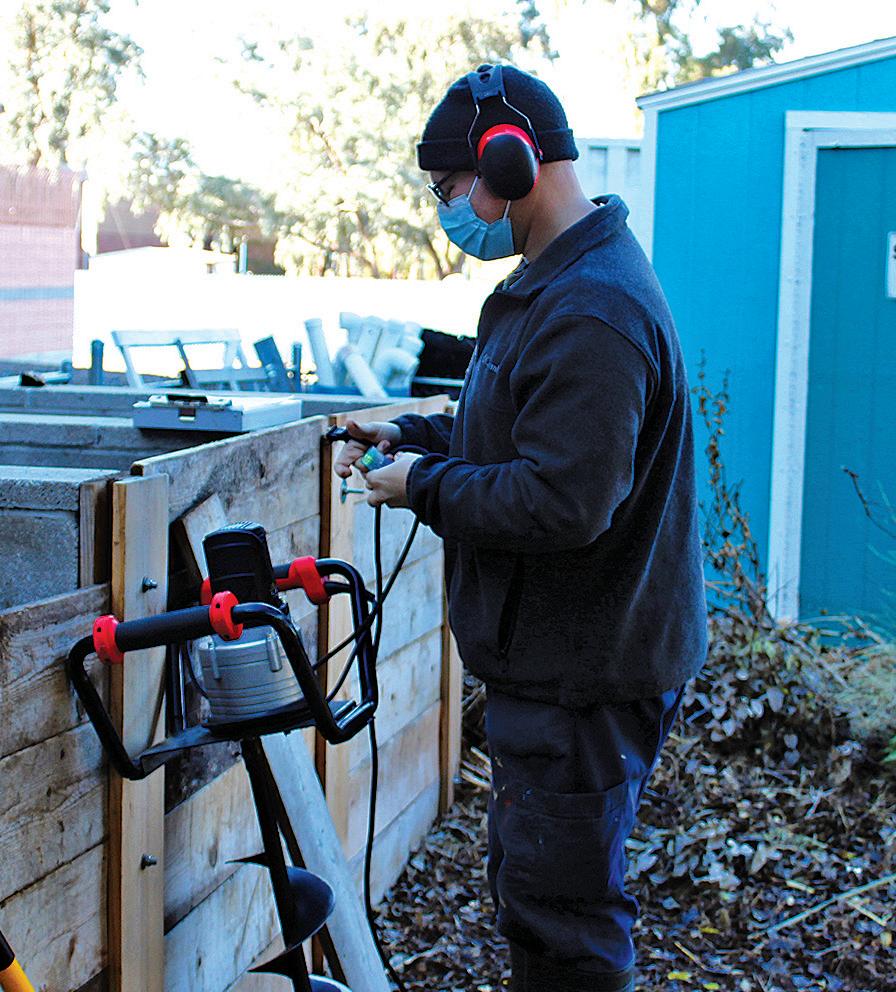

ulation lived in poverty and 15.4% of the community was food insecure.
Food insecurity defined by Healthy People 2030 is “a household-level economic and social condition of limited or uncertain access to adequate food”; 13.8 million households were food insecure at some point of 2020.
Compost Cats has been increasingly involved in the redistribution of still-edible foods to groups such as the University of Arizona Campus Pantry and the Community Food Bank of Southern Arizona through such programs.
The UA Student Union packs its un-

LEFT: True Food Kitchen’s menu emphasizes fresh and simple ingredients in entrées that highlight the natural health benefits and flavors of each ingredient. (True Food Kitchen/ Submitted)

RIGHT: The vegan ancient grains bowl at True Food Kitchen features miso sesame glazed sweet potato, turmeric, charred onion, snap pea, portobello, avocado, hemp seed and cilantro pumpkin seed pesto. (True Food Kitchen/Submitted)
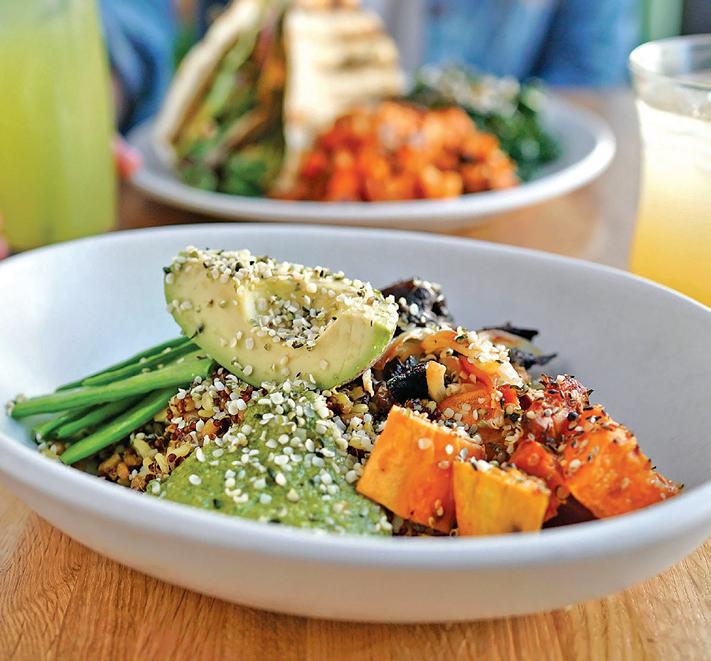
eaten food into tight containers that are donated to the Campus Pantry to be distributed among food insecure students on campus, Rojas-Hamilton said.
Anyone affiliated with the UA can access the Campus Pantry.
On its social media, the Compost Cats host a series called “Compost Misconceptions.” One example is that citrus can upset the pH balance for worms. In backyard systems, the peels do take longer to break down because their fat cells are resistant to decomposition. They break down perfectly in commercial facilities, Jackson said. They are also natural deterrents to unwanted animals and give off nutrients such as nitrogen, phosphorus and potassium that assist with breakdown.
“There’s a really big misconception about bioplastics,” Jackson said. Items like plastic bags or forks may market themselves as compostable, but in reality these items call for bioreactors that reach up to 300 degrees.
“While no at home systems get that high, ours gets to like 160, 170,” she said. “It does what we like to call greenwashing. In reality it’s just going to the landfill.”
The amount of household food waste spikes during the holidays, according to Jackson.
Social media campaigns such as “Food Storage Fridays” educate the public on how to properly store food or create new recipes using leftovers.
“There are certain foods that if you store next to each other, the chemicals released make them decompose faster,” Jackson said.
Even making small strides to store
fruits and vegetables at proper temperatures can make a difference. Jackson said the Compost Cats include links for more information about the science behind composting.
While all landfills do have lifespans, many are reaching capacity. Oftentimes, they are located in or near marginalized communities who can then suffer disproportionate negative impacts on public health, safety and environmental quality.
By diverting a portion of the current organic inputs entering local landfills, Compost Cats is helping them from filling as quickly, significantly extending the lives of existing landfills.
Through waste diversion and materials cycling, Compost Cats continues to fight for environmental justice, ensuring equitable access to natural resources and improving wellness for all.
“It’s a really gratifying way to connect not just to the people of Tucson but also to the land, history and the future,” Young said.

Following in the footsteps of his late father, reggae DJ Papa Ranger, Jahmar Anthony has an affinity for music and education.
His Detroit-bred father — known as Tucson’s first reggae DJ — also shared with him his Midwestern work ethic.

“Don’t stop,” said Anthony, who spins and produces under DJ Jahmar. “That was the thing with my dad. He said, ‘Jahmar, if you’re going to do this, go harder than anyone else.’”
The plan worked. Anthony has reaped the rewards of his father’s advice, winning Tucson Weekly’s Best DJ and Best Reggae Artist prizes. Tucson Local Media includes Tucson Weekly.
“It’s hard being a Jamaican DJ,” he said. “People want to put you in a box.”
Anthony has fought the stereotypes. Clubs have told him, “Your style isn’t going to work here.”
“I’m like, ‘Bro, I play hip-hop, rock, pop, EDM, R&B,’” Anthony recalled. “I have to break that down to them.”


Anthony was raised in a “real Jamaican household” with high expectations. When Anthony came home from school, his father told him to change his clothes, as it’s disrespectful to play in his school uniform. His father was strict and serious about education.
“That was the one thing he did not play about,” he said.
“We’re Rastafarian. In our culture, certain music, like X-rated hip-hop, wouldn’t play in our household. He really believed that words are powerful. When I was growing up, Cardi B would not have been played in my household, for sure.
“It was a real pro-Africa movement in our house. We learned about post-American slavery, the Black kings and queens, apartheid in South Africa.”
His father schooled him about Booker
“I guess I was ahead of my peers,” he said. “I am teaching a lot of my peers about these people. For a person who didn’t finish high school, my father was very cultured. He would teach himself what he wanted to know about. He real-
Anthony started DJing in clubs at age 15. He admitted the first year and a half was hard, with club owners doubting his diversity. He resorted to performing for free to prove his point.
“I play open format,” he said. “I don’t really have a genre of music that I play. I play to the crowd. It could be country. I just like music. I like music.”

Now 38, Anthony has tried other occupations, including short-lived stints
as a bank teller and a call center operator. But music won.
“When I’m DJing, sometimes I don’t see the crowd there,” he said. “Everybody’s just gone, and it’s me in the music and I’m having a dance. Music makes me happy.”
Opening for acts like Sean Paul, Gregory Isaac, Snoop Dogg, Jon B., Beenie Man, J. Holiday, Mavado, Fetty Wap, Tory Lanez and Ziggy Marley, DJ Jahmar has become synonymous with Tucson nightlife. He once served as the DJ for Safaree, formerly of VH1’s “Love and Hip Hop.”
“What I do is not traditional with Tucson DJs. They’re into beat matching. They don’t engage the crowd. They just play music,” Anthony said.
Meanwhile, Anthony hypes up the crowd, engages them and shares stories.
“At the same time, they fell in love with me as a person and a DJ,” he said. “I’ll have events where I won’t DJ. I have other members of my team do it. But (fans) just want to talk to me, take pictures with me, tell me a story. They just want to be around me.”
He gives back, too. Anthony founded Deejays Against Hunger, which aims to help food deprived families who are homeless. The Tucson mayor dubbed Dec. 21 the official Deejays Against Hunger Day. Through the charity, he has helped more than 3,000 people.
In his spare time, he mentors children and travels to reservations to donate school supplies and speak about the music business. He has provided more than 1,000 backpacks to students on the Tohono O’odham Reservation.
“I’m nothing without my fans and supporters,” he said. “People who really believe in me, they believe in Jahmar not only as a DJ but for my charity work.”
DJ Jahmar
WHEN: 10 p.m. Saturday, Dec. 31
WHERE: Mr. Head’s Art Gallery and Bar, 513 N. Fourth Avenue, Tucson
COST: Free admission
INFO: 520-792-2710
WHEN: 8 p.m. Friday, Jan. 6
WHERE: 191 Toole, 191 E. Toole Avenue, Tucson
COST: $10 in advance
INFO: ticketmaster.com facebook.com/jahmarinternational





New Year’s Eve and Day can be a time of celebration, reflection and resolutions. These events in and around Tucson were designed to bring merriment, laughter, music, exercise and joy.

Consider one of these events to ring in the New Year.
Each year, jazz trumpeter Rick Braun holds a star-studded two-day New Year’s Eve celebration with live music, a gourmet meal, beverage and appetizer stations, a champagne toast, dancing and a charity golf tournament. Braun will host the “Last Dance”-themed night and will be joined by musicians Richard Elliot, Dave Koz, Mindi Abair, Chris Walker and Rebecca Jade. This year, the event will benefit the Autism Training Program at Marshall University. Formal or cocktail party attire is encouraged, and guests are asked to not wear jeans or T-shirts.

WHEN: Golf Tournament and Start the Party Early Optional Events Friday, Dec. 30. New Year’s Eve show is 6:30 p.m. to 2 a.m. Saturday, Dec. 31
WHERE: JW Marriott Tucson Starr Pass Resort and Spa, 3800 W. Starr Pass Boulevard, Tucson
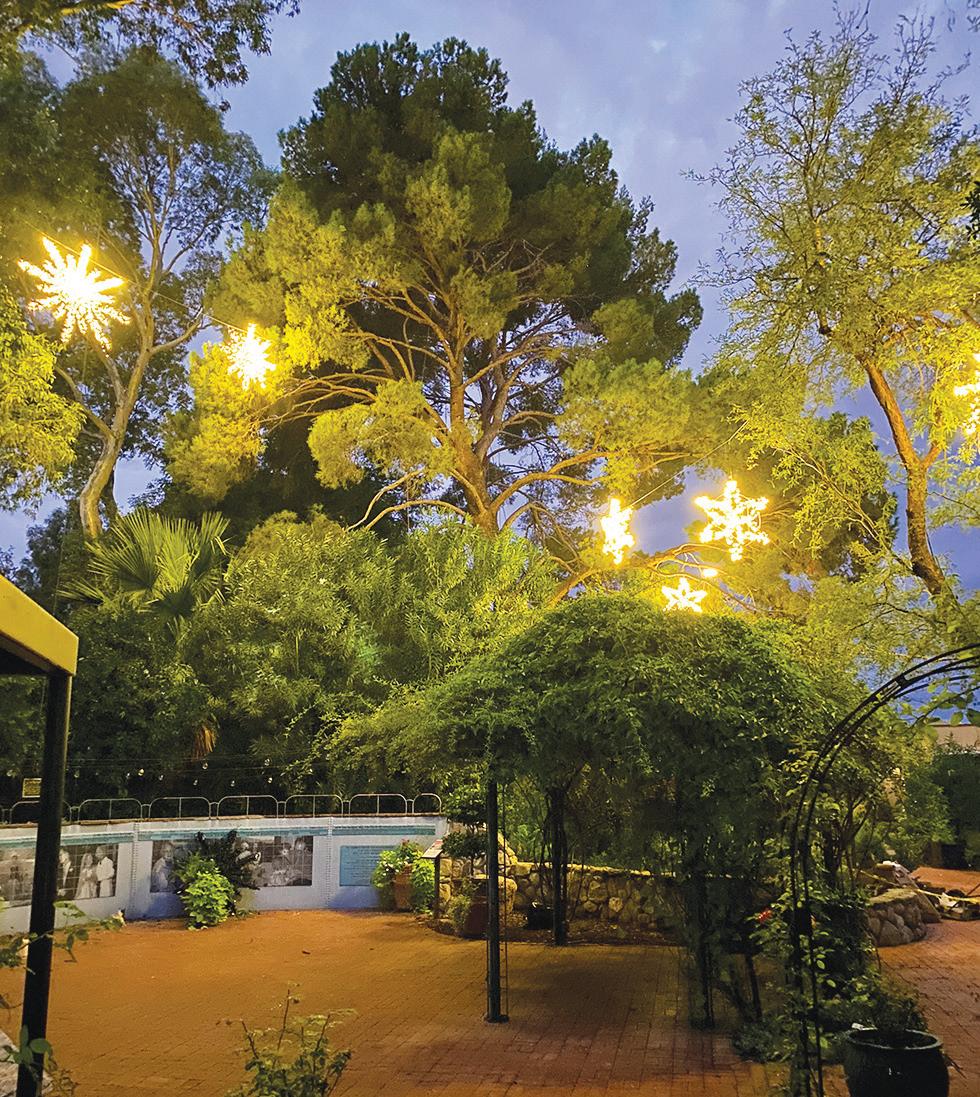
PRICE: Tickets for New Year’s Eve start at $231. Proof of vaccination with booster required within 24 hours of ticket purchase
INFO: rickbraunnewyearseve.com
Good food, live music and time with friends can make New Year’s Eve a special occasion. Miss Olivia’s New Year’s Eve Celebration offers a five-course meal, live and DJ’d music, dancing, a candy table and a themed photo booth. The energy will remain with live music from Chalako, an eclectic Latin band with blues, rock, pop, jazz, Tejano, cumbia and salsa vibes, and the soulful blues/rock/soul
group Miss Olivia and the Interlopers. DJ Kadetree will also look to get partygoers dancing. There will be a variety of food options, including vegetarian items, sliders, cookies, banh mi and hors d’oeuvres. Attendees will receive swag bags with items from local businesses such as Pop-Cycle, Barrio Bread and St. Charles Tavern. Guests can ring in the New Year with a champagne toast on the rooftop patio or in the outdoor courtyard. Semi-formal attire is encouraged.
WHEN: 8:30 p.m. Saturday, Dec. 31 WHERE: Sea of Glass Center for The Arts, 330 E. Seventh Street, Tucson PRICE: Tickets start at $75 INFO: eventbrite.com

Monterey Court NYE Gala
Sometimes, New Year’s Eve can be special because of the experience. During Monterey Court’s NYE Gala, partygoers have a chance to ring in the new year at a historic motor court from the 1930s, which has been turned into a live mu-
sic venue, artist enclave and restaurant. Throughout the evening, the Coolers, an eight-piece R&B/blues/soul band, will perform. Attendees can purchase food a la carte or choose a prix-fixe dinner with soup or salad, an appetizer, an entrée, a dessert and after-dinner coffee. The dinner comes with party favors and a complimentary champagne toast. An East Coast New Year’s toast will be held at 10 p.m.
WHEN: 7 to 11 p.m. Saturday, Dec. 31
WHERE: Monterey Court, 505 W. Miracle Mile, Tucson

PRICE: $20 general admission, $60 for dinner and entertainment


INFO: 520-207-2429, montereycourtaz. com
Laughter has become even more important these days in taking people away from their troubles and giving them
shared experiences with others. On New Year’s Eve at Laffs Comedy Café, comedian Alex Elkin will headline two shows. The comedian started doing comedy in 2016 after winning the San Francisco Comedy Competition. He also won the Hard Rock Casino’s 2018 Comedy Cage Match and has traveled to Iraq and Syria
to bring laughter to the troops. He has appeared on Netflix’s “Trinkets,” the NBC show “Grimm” and E!’s “The Simple Life.” During the late show, there will be a midnight countdown.
WHEN: 7:30 p.m. and 10:30 p.m. Saturday, Dec. 31
WHERE: Laffs Comedy Café, 2900 E.
Broadway Boulevard, Tucson
COST: Visit website for information
INFO: 520-323-8669, laffstucson.com

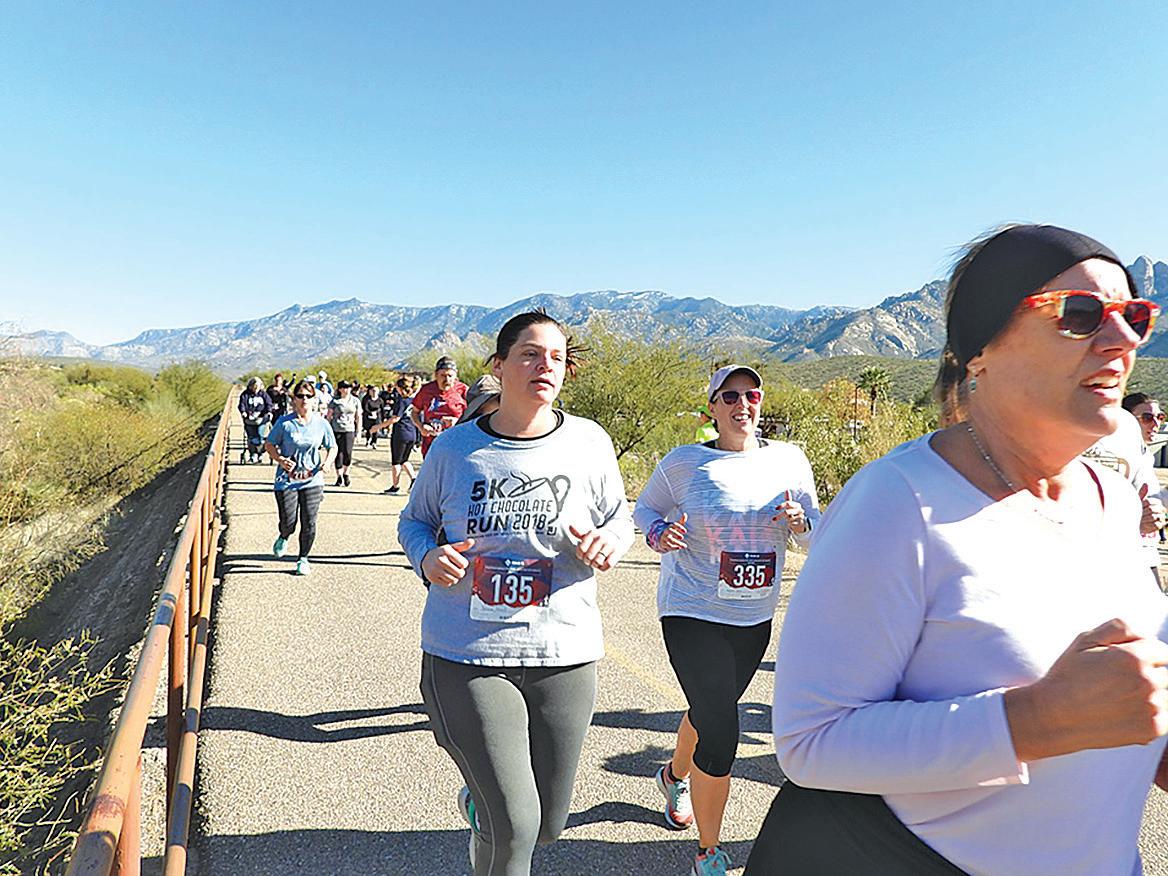

The holidays can be a time of indulgence. Those who want to start their New
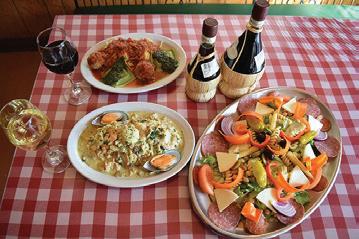


Year’s resolutions off on the right foot can get out and be active during the Hot Cocoa 5K Run/Walk. The professionally timed run/walk was designed for people of all ages. It takes participants on a loop through Steam Pump Ranch, on a shared-use path along Oracle Road, past Pusch View Lane and back around. The top female and male runners will receive $50 gift cards to Fleet Feet. There will be age group categories, broken down from 0 to 4 to 85 and older. First- through third-place winners in each category will receive medals. Kids will get “good job” medals. After the race, families can enjoy a steaming cup of cocoa and snacks like fruit, granola bars and fruit bars. Proceeds from the race benefit Oro Valley’s Round-Up for Youth recreation scholarship program.
WHEN and WHERE: Packet pickup: 10 a.m. to 1 p.m. Saturday, Dec. 31. Fleet Feet, 7607 N.

Oracle Road, Suite 121, Oro Valley.
Race day number pickup and registration: Starts 9:30 p.m. Run/walk starts 11:23 a.m. Sunday, Jan. 1. Steam Pump Ranch. 10901 N. Oracle Road, Oro Valley PRICE: $30 before race day, $35 day of race, children 12 and under free with paying adult.
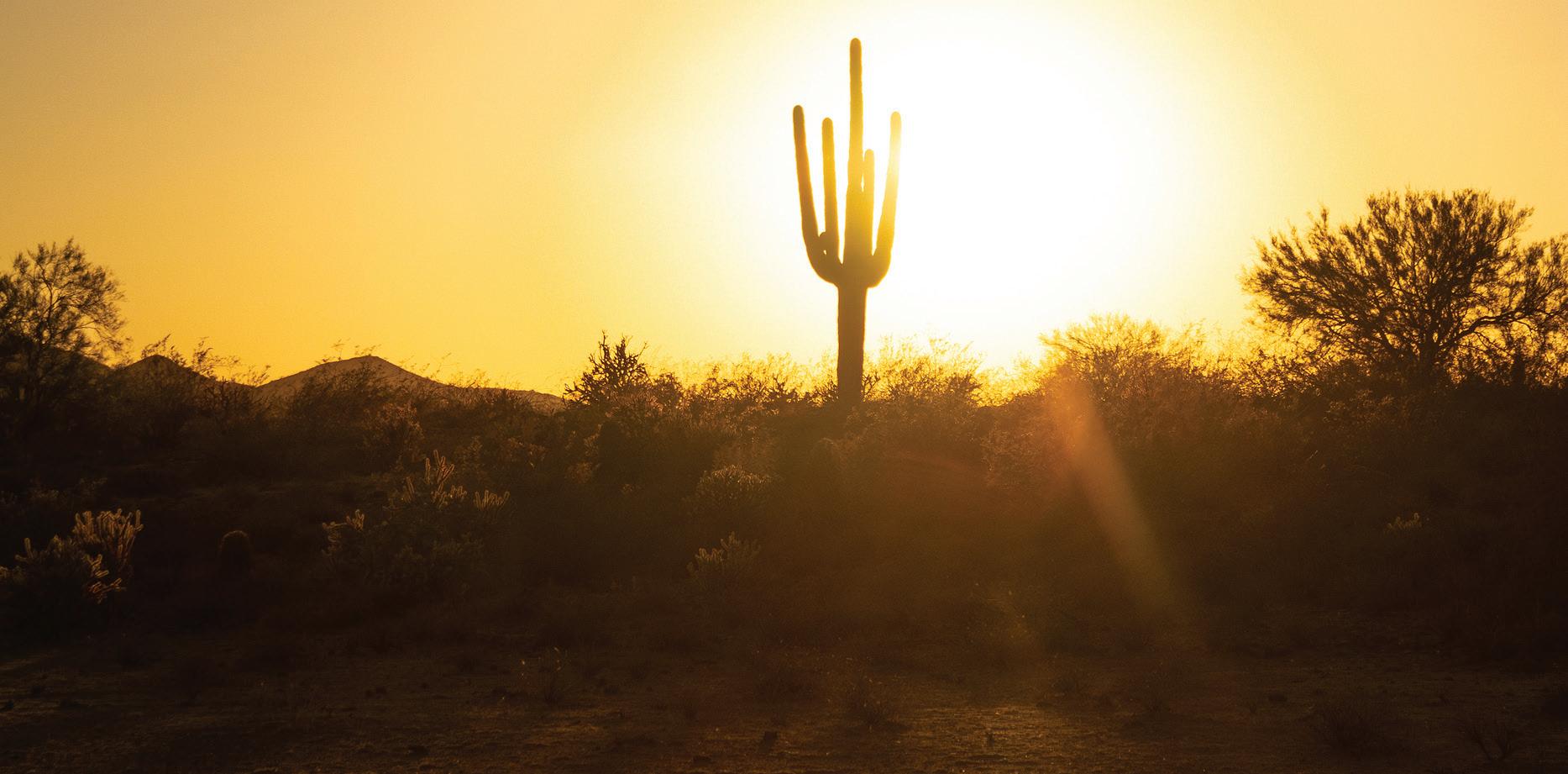
INFO: orovalleyaz.gov
The chance to see lights doesn’t end with Christmas. Visitors can see the Tucson Botanical Gardens’ new lights show Lights Up! A Festival of Illumination through Sunday, Jan. 15. The display will be open on New Year’s Eve and Day and will offer six themed zones. Guests will feel in the holiday spirit when they go experience 50-foot light tunnel, choreographed cypress trees, giant chandeliers adorned with luminarias, and a spiral luminaria tree. The botanical gardens are decorated with a million lights, spread
out throughout the trees.
WHEN: 5:30 to 9:30 p.m. Four timeslots at 5:30, 6:30, 7:30 and 8:30 p.m. six days a week through Sunday, Jan. 15.

WHERE: Tucson Botanical Gardens, 2150 N. Alvernon Way, Tucson PRICE: $30 for nonmember adults 18 and older, $28 for nonmember children





4 to 17, $28 for adult members, $26 for child members, free for children under 4 INFO: 520-326-9686, tucsonbotanical.org


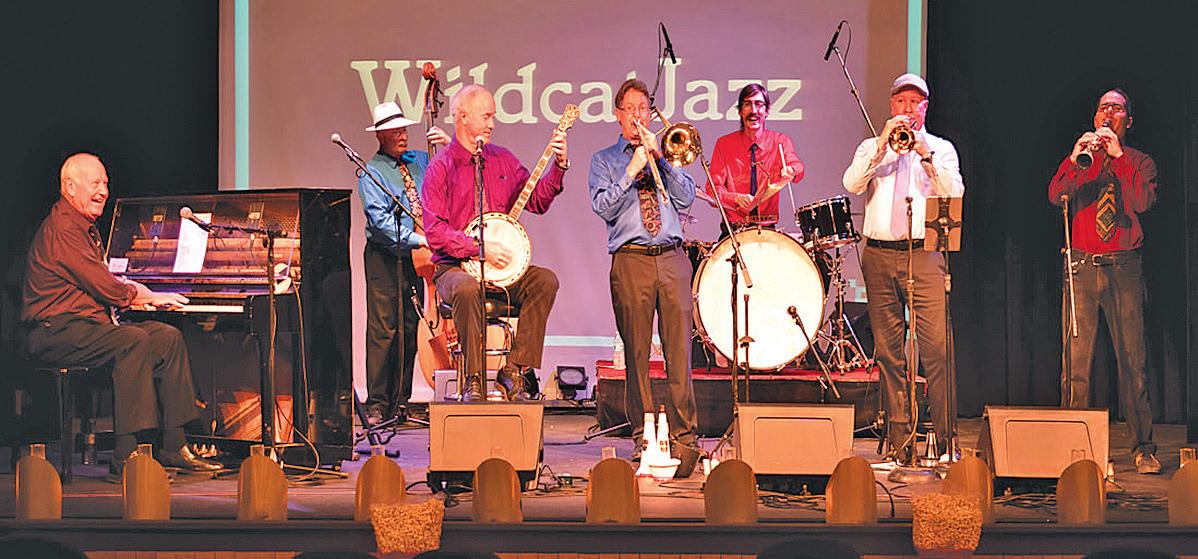
There’s just something about the
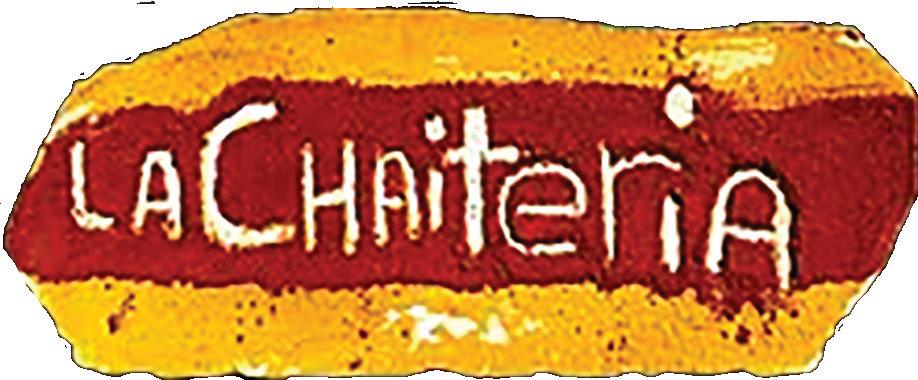
1920s that still has an intrigue. During Hotel Congress’ Roaring ’20s NYE on Congress Prohibition-era jazz party, patrons will feel like they have been taken back to a time of flappers. The event will start with solo ragtime music on the piano, followed by 1920s music from the seven-piece Original Wildcat Jazz Band. Guests will hear a cornet, a trombone, a banjo, a bass, the piano, the drums and a clarinet. At 10 p.m., there will be a New York champagne toast. Guests are encouraged to dress in period attire or black tie.
WHEN: Doors open 7 p.m. Sets at 9 p.m.
and 11 p.m. Saturday, Dec. 31
WHERE: Century Room, Hotel Congress, 311 E. Congress Street, Tucson PRICE: $50, which includes the champagne toast INFO: hotelcongress.com/family/ century-room

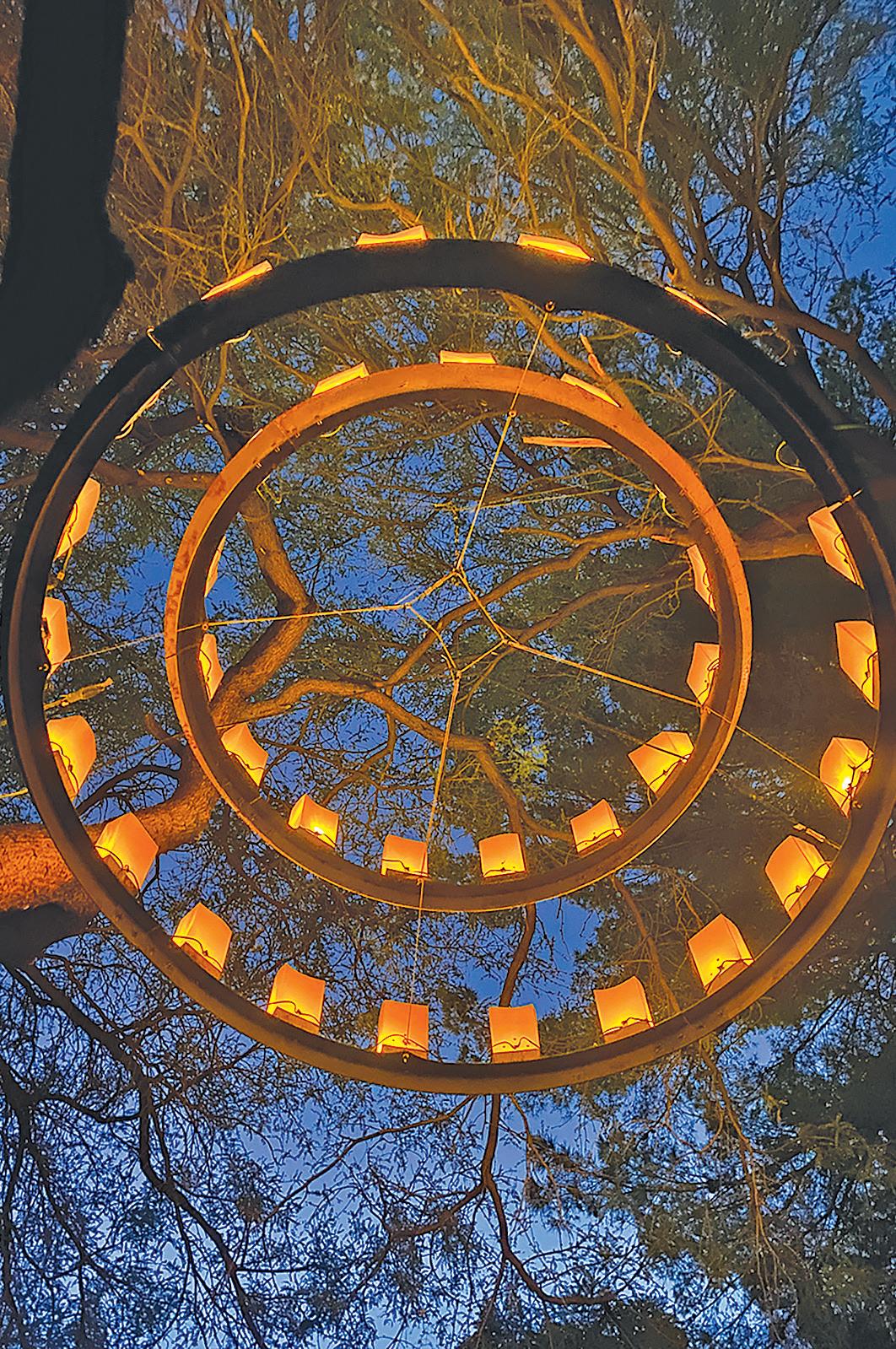
There’s no better way to ring in the New Year than with dinner, dessert, dancing and drinks. During the NYE Party at Hacienda del Sol Guest Ranch, guests can enjoy a dinner buffet, which comes with salad, seafood, antipasto, vegetarian and pasta options. There will also be a

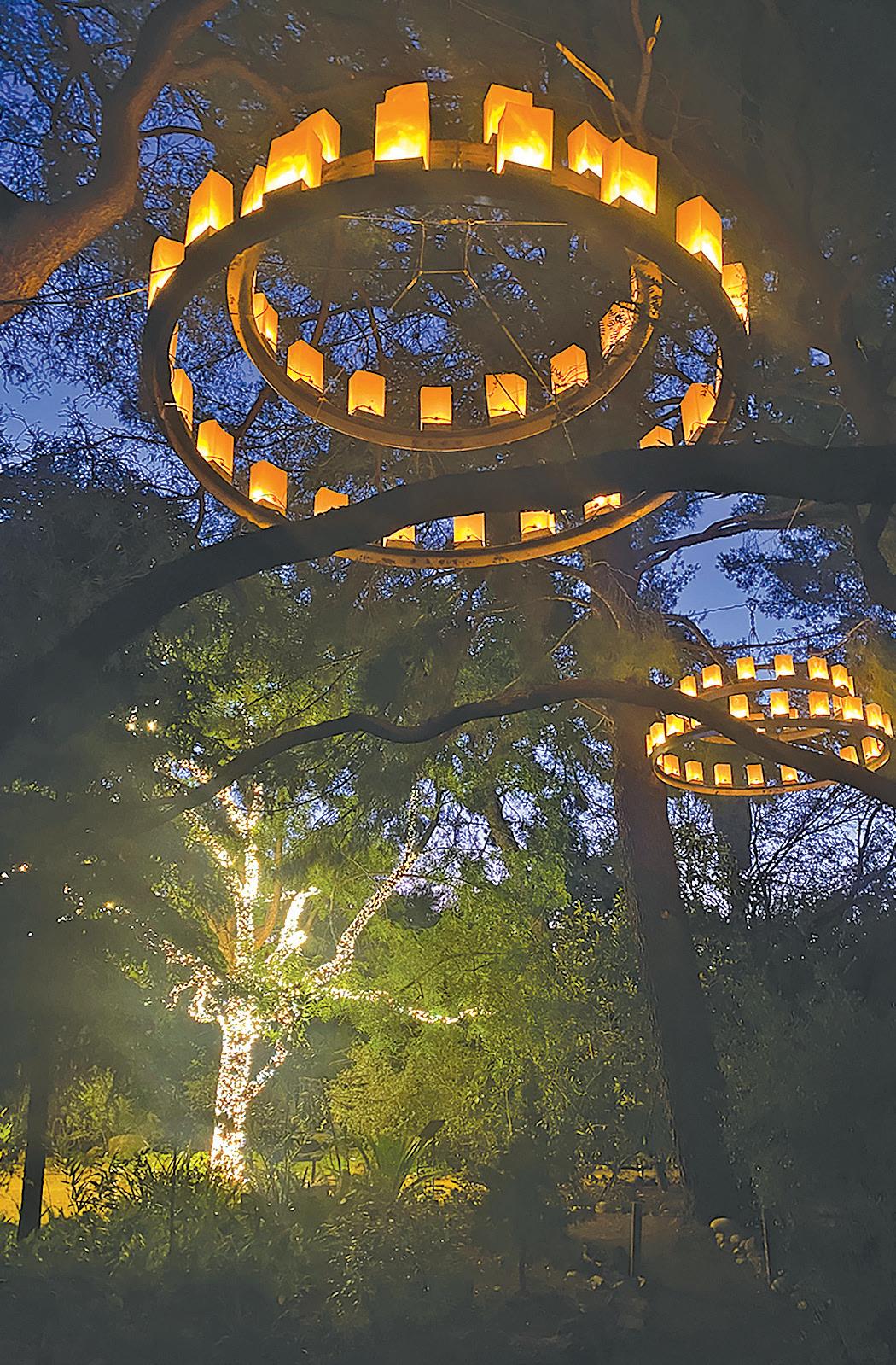
dessert buffet with options such as blueberry lemon opera cake, mimosa cake truffles and chocolate raspberry bubbly fudge. Connie Brannock and the Little House of Funk will keep up the energy, playing R&B favorites sure to get listeners dancing. The night will end with a champagne toast with party favors. The night is open to those 21 and older.
WHEN: 7 p.m. to 1 a.m. Saturday, Dec. 31

WHERE: Hacienda del Sol Guest Ranch, 5501 N. Hacienda del Sol Road, Tucson PRICE: $125 for buffet, dinner, dessert and dancing; $35 for dessert and dancing

INFO: 520-526-9345, haciendadelsol. com












You can boost your chances of sticking to your 2023 New Year’s resolutions by following good “goal practices.” To help you get off on the right foot, here are five tips from Todd Lutz, the spa and fitness manager at Splendido, a Life Plan Community for those 55 and better in Oro Valley.

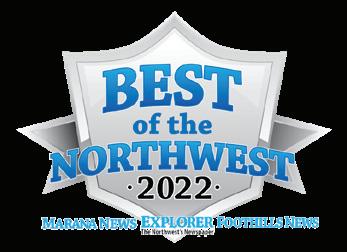
Todd works with Splendido residents to create personalized plans for getting and staying in shape. “I’ve seen what works and what doesn’t in terms of fitness plans that people can follow through on,” he says. “And I think the same guidelines can apply to New Year’s resolutions.”
Regardless of whether you’ve made resolutions for 2023, you can increase your chances of reaching goals by using the steps below. They are written to target fitness goals, but they apply to other areas of life as well:
• Be specific as well as realistic. “Rather than make a vague resolution to get in shape or lose weight, decide on a specific, attainable goal,” Todd advises. For instance, if you want to get in shape to maintain your overall health, maybe your goal could be to lose a certain amount of weight by a specific reasonable deadline. . . or to be able to hike two miles.
• Big goal? Break it down. It’s great to think big when it comes to fitness goals. . . but a lofty goal like being able to run a marathon can be daunting, and that makes it easy to abandon. Particularly for goals or resolutions about weight loss or exercise, map out a timeline of smaller milestones to help you reach the overall goal. Or schedule weekly or monthly check-ins to see how you’re doing.
• Put it on your calendar. Once you’ve decided on a specific goal and broken it down if necessary, plan when you will devote time to working toward it. “I suggest you literally put it on your calendar,” says Todd. “Whether you are noting an hour every morning for a brisk walk or listing when your new yoga class takes place—if you don’t make time for it at the outset, you won’t be able to work toward that goal.”
•Share your plan for added support. Imagine two scenarios: In the first, you’ve resolved to lose weight, but you don’t tell anyone because you feel self-conscious. In the second, you tell your friends and family about your goal; this allows them to support you, and help hold you accountable. “Having others who may ask about your progress, cheer your successes, or hear about your setbacks

will help you stick to your goal,” says Todd.
• Stay resilient. With any major goal, you’re going to experience setbacks. “When you backslide a little, start the next day fresh and resolve to get back to your good habits,” says Todd. “It’s human nature to use one lapse as an excuse for more—but if you resolve at the outset not to let that happen


to you, you’ll be ahead of the game.”
Basically, the keys to succeeding at New Year’s resolutions or long-term goals are choosing an appropriate goal and thinking it through. “You’ll notice that most of these steps happen before you ever lace up your running shoes or eat your first salad,” says Todd. “By taking some time and researching and selecting a realis-
tic fitness goal, breaking it down into steps before you get started, and scheduling when you’ll work on it, you are making it easy to stick with good habits and make it all happen.”
Interested in learning more about Splendido? For floor plans, photos, and information on upcoming events, visit splendidotucson.com.

We mourn the passing of Mississippi State football coach Mike Leach, who passed away much too young (at the age of 61) on Dec. 13. He was a truly unique character, a lawyer who never played college football and yet was one of the greatest and most innovative coaches of our time.
Four of the top nine college players in terms of passing yards in a season (of all time!) were coached by Leach. Only four coaches have ever had a team average over 470 passing yards per game for an entire season, and Leach did it at three schools. He took Washington State (!) to five straight bowl games.

I remember the night that the University of Arizona fired Rich Rodriguez, who, after having taken Arizona to the
Pac-12 Championship game in 2014, had seen his program begin to decline. (Rodriguez was fired for off-the-field stuff.) I wrote a column that night, begging the UA to hire Mike Leach away from Washington State.
He would have been perfect. Leach thrived at second-level schools and loved challenging the big boys. He took Texas Tech to the top of the Big 12, shoving powerhouses Oklahoma and Texas aside in the process. Washington State had gone a decade without a winning season when he took over and made them a winner almost overnight. And this year, he coached perennial loser Mississippi State to an 8-4 record in the mega-tough Southeastern Conference. (One of those eight wins was at Arizona back in September.)
As it turned out, the university, which rarely takes my advice, settled on Kevin Sumlin instead and the death spiral that had begun under Rodriguez accelerated to warp speed under Sumlin. New coach Jedd Fisch has stopped the bleeding and has started to turn things around, but it will still probably be a couple years before Arizona fans will be able to watch that scene in the movie “Speed” where Keanu Reeves says “Arizona Wildcats… good football team…” without wincing. Leach was widely known as a character. He had a longtime, good-natured feud with a fellow coach as to which Native American leader was the better battle commander. The other coach argued for Comanche leader Quanah Parker, while Leach was so adamant that it was the Apache Geronimo that Leach wrote
sive coordinator and then as a head coach, footballs would be flying all over the place. His offense was called the Air Raid, and it often kept his outmanned teams in games in which they would have had no business competing. Not surprisingly, Leach holds the all-time NCAA record for wins by a coach for an unranked team over teams in the Top 25.
There was a decent sports movie called “Glory Road,” which chronicled the Cinderella (true) story of a backwater college that put together an all-Black lineup that won the NCAA basketball championship over all-white powerhouse Kentucky back in the 1960s. The school was called Texas Western (it’s now University of Texas-El Paso). In the movie, Texas Western coach Don Haskins (played by Josh Lucas) stops at a gas station. The attendant (played by the real Haskins) offers a few words of encouragement. It was a cute moment.

Having seen that, Leach, who was then a rising star at Texas Tech, did a cameo on the outstanding TV series “Friday Night Lights.” In the scene, coach Eric Taylor, only a year after winning a state championship, has been the victim of petty politics and has been moved to East Dillon High, an inner-city school with bad facilities and no football tradition.
Taylor is very down, but then, at a gas station, he has a chance encounter with a character played by Leach (or maybe it’s Leach as himself; we never do find out). Leach launches into a bizarre keepyour-head-up rant, including instructions on how to swing a sword. He ends with “You’ve lost your inner pirate.”
We lovers of college football (and characters) have lost our favorite pirate.


How far does one go in pursuit, not of some lofty athletic dream, but rather in pursuit of a simple opportunity to compete? This philosophical question has no doubt crossed the mind of Amphi wrestler Lesly Hernandez many, many times in the past year. And while it screams at her from the past, it also whispers to her off in the not-too-distant future, offering her that one last chance.
Last year, the then-junior made the long bus ride from Tucson to Safford for an invitational. With wrestling for high school girls still in its nascent stages, such meets can be incredibly frustrating for some with only limited competition (or sometimes none) in the various weight classes.
“We had made that three-hour bus ride to Safford, and when we got there, I found out that there was nobody for me to wrestle (at 118 pounds),” she recalled. “So we set up an exhibition match, and I was going to wrestle a boy.”
She was holding her own and having a good time when her opponent dove at her legs (certainly a legal maneuver). She planted her legs but felt a twinge in her knee. The twinge turned to searing pain when her opponent completed the move, twisting her and then landing on her leg during the takedown.
“It hurt for a while, but it didn’t hurt that bad.”
She continued her season, wearing a


sleeve on her sore knee and wrestling at least five more matches in the following weeks. Then, suddenly, in another match, she planted her leg and her knee went in a direction that human knees aren’t supposed to go.
“I knew” is all she can say about it.
She had the surgery for her torn ACL and is nearing the end of her yearlong rehab. In the meantime, she has been focused on her AP-heavy academic workload (she’s taking AP calculus). She wants to go to college in Pennsylvania, having narrowed her choices down to either Lehigh or Swarthmore. A friend of hers from last year, former Amphi tennis star Mi Meh, is at Swarthmore and speaks highly of it. Hernandez hopes to major in biomedical engineering.
But that’s next year. Right now, wrestling is still calling her name. She is rehabbing her knee and working out with the wrestling team daily. She wants to be medically cleared and ready to wrestle by the sectionals on Feb. 4.
“It would be nice to have a couple warm-up matches before then, but I don’t know if I will be able to,” she said.
“The sectionals are all that matter. You can have a great season, winning a lot of matches in invitationals and (dual meets), but the only way to go to state in by winning at sectionals.”
Going to state is probably beyond her wildest dreams, but getting on that mat one last time is definitely front and center. “I’ve worked so hard to get back. I just want to wrestle.”


ARIES (March 21 to April 19) You've let yourself get distracted from what's really important. But love finally gets your attention this week. However, it comes with a challenge that could create a problem.
TAURUS (April 20 to May 20) Be careful not to bully others into following your lead. Best advice: Persuade, don't push, and you'll get the cooperation you need to move forward with your plans.
GEMINI (May 21 to June 20) Resist the urge to gloat now that you've proved your detractors wrong. Instead, charm them back into your circle. Remember: A former foe can become your best ally.
CANCER (June 21 to July 22) You might want to claim all the credit for making this holiday season special. But is it worth producing a lot of hurt feelings by rejecting offers of help? Think about it.
LEO (July 23 to Aug. 22) Ignore a co-worker's questionable behavior. Instead, put your energy into making your own project special. Then sit back and purr over your well-deserved applause.
VIRGO (Aug. 23 to Sept. 22) You might not want to accept those suggested changes in your workplace, but don't chuck them out before you check them out. You could be happily surprised.
LIBRA (Sept. 23 to Oct. 22) Your plans might have to take a back seat for a bit so that you can handle a problem with a friend or family member. Your schedule will return back to normal in a few weeks.
SCORPIO (Oct. 23 to Nov. 21) Relationships in general are beneficial during the early part of the

week, including in the workplace. Also, expect some overdue changes in a personal situation.
SAGITTARIUS (Nov. 22 to Dec. 21) "Prudence" should be your watchword this week. Best not to be too open about some of the things that are currently happening in your life.
CAPRICORN (Dec. 22 to Jan. 19) Money is on your mind, so you'd best mind how you're spending it. Take another look at your budget and see where you can make adjustments.
AQUARIUS (Jan. 20 to Feb. 18) Resolving to revive an old friendship could open some old wounds. Are you sure you want to risk that? Think this through before making a commitment.
PISCES (Feb. 19 to March 20) Your need to know more about a new friend could lead to some startling revelations. Best advice: Keep an open mind about what you learn until all the facts are in.
BORN THIS WEEK: Your loyalty to friends




